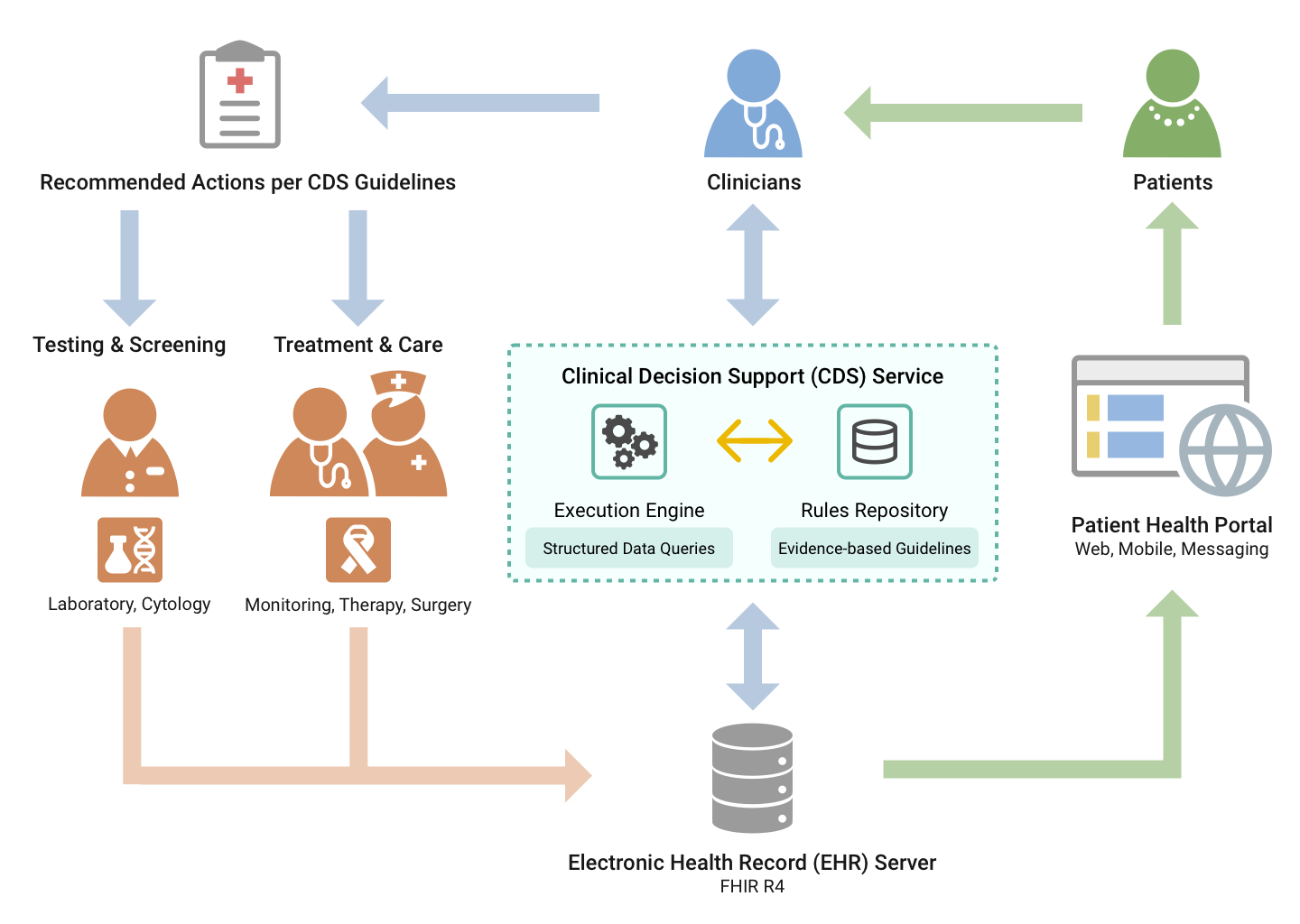Cervical Cancer Screening and Management
Clinical Decision Support
Using Computable Guidelines to Improve Cervical Cancer Screening and Management
Overview
The Centers for Disease Control and Prevention (CDC’s) Division of Cancer Prevention and Control partnered with the CMS Alliance to Modernize Healthcare federally funded research and development center (Health FFRDC) on a multi-year effort to develop clinical decision support (CDS) tools. CDC and the Health FFRDC developed these tools to encourage awareness and adoption of the most up-to-date cervical cancer screening guidance and the new risk-based approach for managing abnormal screening results.
The project team intends for the CDS to help clinicians provide cervical cancer screening and management (CCSM) care based on updated guidelines from several organizations including the United States Preventive Services Task Force (USPSTF) and the American Society for Colposcopy and Cervical Pathology (ASCCP). The Health FFRDC is developing the CDS using a reproducible process, utilizing interoperable health information technology (IT) standards including Health Level 7 International (HL7®) Fast Healthcare Interoperability Resources (FHIR®) and the Clinical Quality Language (CQL).
Background
Timely screening and follow-up can identify and treat cervical precancer and reduce the number of cervical cancer cases and deaths diagnosed each year. Updates to cervical cancer screening and management guidelines have incorporated the use of primary HPV testing, individualized risk assessments and changes to the types and frequency of testing depending on age. The increased complexity of these guidelines makes it challenging and error prone for clinicians to adhere to the latest recommendations.

By transforming narrative guidelines for cervical cancer screening and management into computable formats, and building CDS tools, these guidelines can be integrated into electronic health record (EHR) platforms. The CDS can evaluate a patient's clinical data against the guidelines and display appropriate screening and management recommendations.